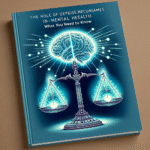
Embrace Tranquility: A Guide to Essential Holistic Stress Management Techniques
Introduction
In today’s fast-paced world, stress has become an almost constant companion for many. From tight deadlines to personal challenges, the pressures can feel overwhelming. Fortunately, there’s a beacon of hope—embracing tranquility. Embrace Tranquility: A Guide to Holistic Stress Management Techniques offers a roadmap to reclaim your peace of mind and restore balance in your life. By integrating holistic approaches that address the mind, body, and spirit, you can cultivate a resilience that empowers you to navigate life’s challenges with grace.
Understanding Stress: The Silent Afflictor
Stress is not just a mental challenge; it’s an intricate reaction to the external pressures of everyday life. When left unchecked, stress can lead to a myriad of health issues, including anxiety disorders and cardiovascular diseases. According to the American Psychological Association, more than 75% of Americans experience symptoms of stress at some point in their lives. You may wonder, how can we effectively manage this pervasive issue?
Embrace Tranquility: A Guide to Holistic Stress Management Techniques emphasizes understanding stress responses. The first step in dealing with stress is recognizing the triggers—be it work, relationships, or financial concerns. By pinpointing these sources, you set the foundation for more effective stress management.
The Holistic Approach: Mind, Body, and Spirit
Holistic stress management recognizes that true well-being encompasses all facets of a person.
1. The Mind: Cognitive Techniques
Mindfulness Meditation
Mindfulness meditation is a powerful tool for reducing stress. It encourages living in the present moment, fostering a profound awareness of thoughts and feelings without judgment. A case study from Harvard University revealed that participants who practiced mindfulness meditation over an eight-week course showed a 30% reduction in stress levels.
[Table 1: Benefits of Mindfulness Meditation]
| Benefit | Description |
|---|---|
| Reduces Anxiety | Lowers the levels of anxious thoughts |
| Enhances Focus | Increases attention and concentration |
| Emotional Regulation | Improves ability to manage emotions |
| Better Sleep Quality | Promotes deeper, more restful sleep |
2. The Body: Physical Techniques
Yoga and Tai Chi
Both yoga and Tai Chi combine physical movement with mental focus and breathing techniques. These practices promote flexibility, strength, and a sense of inner peace.
A compelling case study from the University of California demonstrated that individuals practicing Tai Chi reported a significant decrease in perceived stress and anxiety, along with improved overall health. These exercises encourage meditation in motion, helping to harmonize the mind and body.
3. The Spirit: Energy Techniques
Reiki and Chakra Balancing
Reiki and chakra balancing focus on the energy flow within the body. These techniques allow individuals to tap into their spiritual selves, promoting healing on various levels. In a case study conducted at a holistic healing center, clients receiving Reiki regularly reported significant decreases in stress and increased feelings of tranquility.
[Chart 1: Impact of Reiki on Stress Levels]
| Measure | Pre-Reiki Average | Post-Reiki Average |
|---|---|---|
| Stress Levels (0-10) | 8 | 3 |
| Anxiety Levels (0-10) | 7 | 2 |
Daily Practices to Incorporate Tranquility
1. Gratitude Journaling
A simple yet effective practice, gratitude journaling involves writing down things you are thankful for every day. This technique shifts focus from stressors to positive experiences, enhancing overall emotional well-being.
2. Nature Therapy
Spending time in nature has been shown to reduce cortisol levels—our body’s primary stress hormone. Activities such as hiking, gardening, or simply walking in a park can ground you and restore energy.
3. Aromatherapy
Essential oils like lavender and chamomile can have calming effects. A study published by the National Institutes of Health indicated that subjects exposed to lavender essential oil experienced reduced anxiety and stress levels.
4. Proper Nutrition
Nutrition plays a pivotal role in managing stress. Foods rich in omega-3 fatty acids, antioxidants, and vitamins can help mitigate the physical effects of stress. Incorporating more fruits, vegetables, and whole grains can improve both physical and mental health.
Overcoming Challenges in Stress Management
Despite a wealth of techniques available, many struggle to implement holistic stress management into their lives. Here are a few common concerns and how to address them.
1. “I don’t have time.”
Time constraints are valid, but even dedicating five to ten minutes a day to mindfulness or stretching can yield benefits. Start small and build up gradually.
2. “I’m not good at meditation.”
Meditation is a skill that improves with practice. Consider guided sessions available through apps or online videos to ease yourself into the process.
3. “I don’t know where to begin.”
Explore different holistic techniques to find what resonates with you. Joining a local class, such as yoga or meditation, can provide structure and community support.
4. “I feel overwhelmed by choices.”
Begin with just one technique, and allow yourself to gradually explore others as you become more comfortable. Holistic stress management is about finding what fits your lifestyle.
5. “I tend to forget self-care.”
Incorporate reminders into your daily routine. Use scheduling tools or alarms on your phone to prompt mindfulness breaks or movement throughout your day.
Conclusion: The Journey to Tranquility
Embrace Tranquility: A Guide to Holistic Stress Management Techniques is not simply a manual, but rather an invitation to embark on a transformative journey. By utilizing holistic techniques—cognitive, physical, and spiritual—you can cultivate lasting resilience against the stressors of life. Remember, tranquility doesn’t occur overnight; it requires commitment and practice. Start today, even with small steps, and unlock a profound sense of peace and well-being.
Key Takeaway
In the words of Lao Tzu, "Nature does not hurry, yet everything is accomplished." As you integrate these techniques, trust in the process and allow tranquility to gradually unfold in your life.
FAQs
1. What is holistic stress management?
Holistic stress management addresses stress through multiple avenues—mind, body, and spirit—rather than solely focusing on symptoms. This approach promotes overall well-being.
2. Can mindfulness really reduce stress?
Yes, studies have shown that mindfulness practices significantly lower stress levels by promoting relaxation and a positive outlook.
3. How often should I practice holistic techniques?
Consistency is key; aim for daily practice, even if it’s just for a few minutes. Gradually increase your practice as you become more comfortable.
4. Are there specific dietary changes I should consider for stress relief?
Incorporate more omega-3 rich foods (like salmon and walnuts), green leafy vegetables, and whole grains to nourish your body and combat stress effectively.
5. Can I practice holistic techniques with a busy lifestyle?
Absolutely! Holistic practices can be adapted to fit any lifestyle. Short sessions of meditation, yoga, or gratitude journaling can be easily integrated into a busy schedule.
Throughout this exploration, remember that embracing tranquility is a personal journey. Each technique offers a unique path toward a more peaceful life, and your commitment to that journey can transform not just your stress management but your entire outlook on life. So take that step today—embrace tranquility!


















